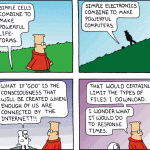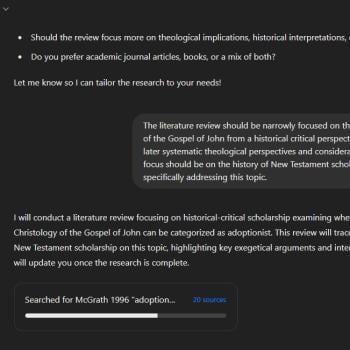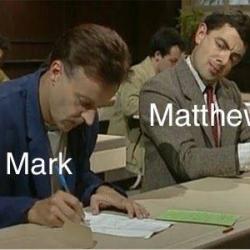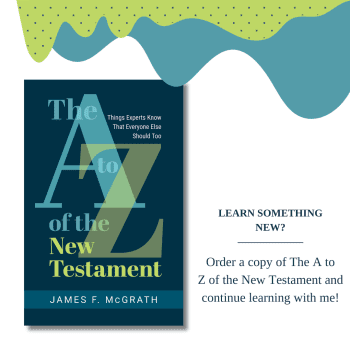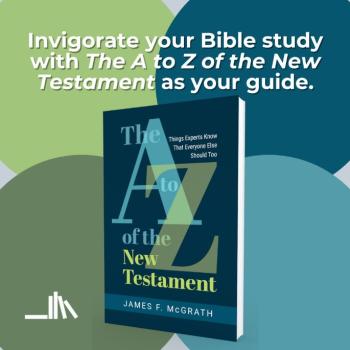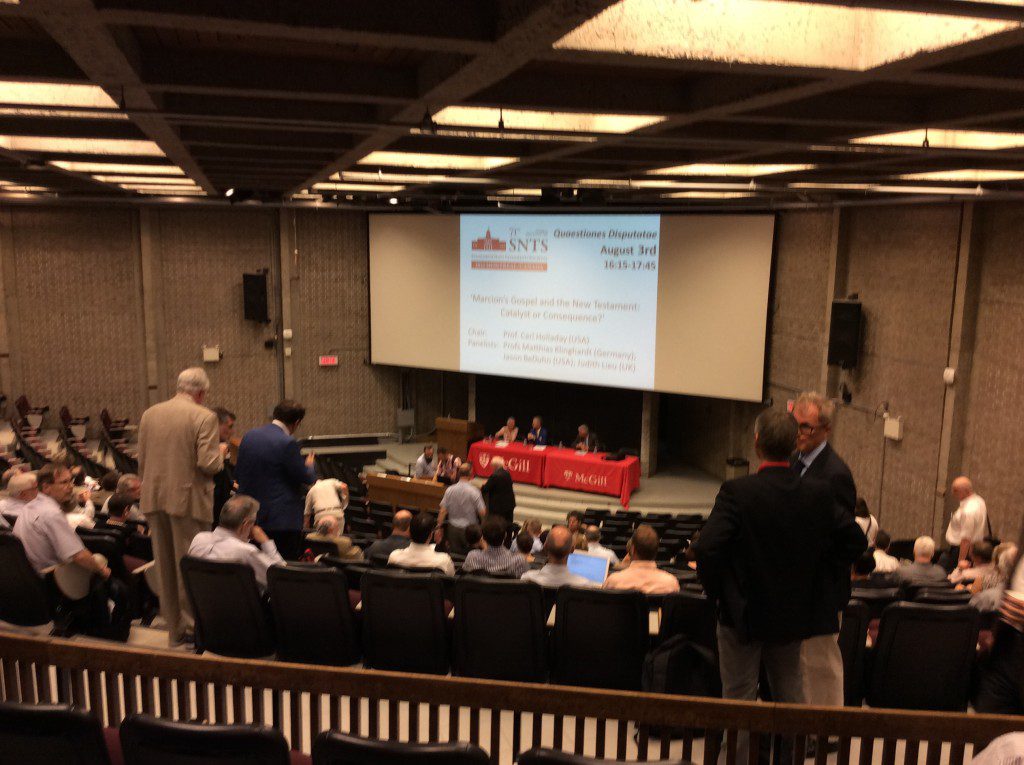
There was another coffee break, at which I had the delightful opportunity to Arie Zwiep, who overlapped with me at Durham one year, but we never got to know one another then. We talked about the toxic impact that fundamentalist squelching of open discussion has on faith.
After the break was a panel discussion about Marcion and the New Testament. Carl Holladay chaired the panel, and the panelists were Judith Lieu, Jason BeDuhn, and Matthias Klinghardt. Klinghardt discussed the unliklihood of editorial cranks whose changes to a text have no apparent rationale, and asserted that the evidence consistently points to Luke having altered Marcion’s Gospel rather than the reverse. He also described the principle that one should not accept what sources say just because they say so as “historical criticism 101.” His view is that the Marcionite Gospel was the “root from which the whole Gospel tradition emerges,” eliminating the need for Q and making the quest for the historical Jesus impossible. (See the next page for his Powerpoint slide diagramming his view.) There is a connection between Marcion’s edition of Luke and the so-called Western non-interpolations. If he is correct, the entire field of textual criticism would require rethinking and revision in a way that would have radical implications for the entire field of New Testament studies.
Jason BeDuhn emphasized the evidence of minor agreements between Matthew and Luke, and spoke of Marcion’s text as a “fourth Synoptic Gospel.” The lateness of our manuscripts means that we have intertextual exposures which we wrongly treat as compositional characteristics that must be explained in our solutions to Gospel interrelationships. Marcion is not the redactor but the interpreter of the Gospel associated with his name. BeDuhn does not find any characteristic if Marcion’s Gospel that reflects his unique ideology, nor does he find Luke’s characteristics to make sense as anti-Marcionite in character. There is no clear ideological tendency that separates one from the other, and so they might well be revisions by the same author to his composition. When Marcion’s Gospel is substituted for Luke in the two-source solution to the Synoptic Problem, the oddity of Q beginning with narrative only to then switch to sayings-only after the baptism and temptation disappears, suggesting that the two-source hypothesis is fundamentally sound.
Judith Lieu expressed her skepticism about the accuracy of Tertullian and Epiphanius about the character of Marcion’s Gospel. She is critical as a result of Klinghardt’s reconstruction, including his approach to filling in of lacunae. She suggested that if we need to give up the Shangri-La of an Ur-Text, then we must also give up similar hopes of recovering an Ur-Gospel. Scissors and paste views of the Gospels require scriptoria which we do not have evidence for in early Christianity. Instead, we need to recognize textual fluidity, with moves from oral to written and back to oral and back again to written again. And we need to recognize that notions such as canon are anachronistic, and that views of linear development are simplistic in face of the reality of chaos, diversity, and complexity in ancient Christianity. Her concluding call was “let Marcion be Marcion,” whereas we have a tendency to co-opt him as a cipher for other things.
The presenters then spoke among themselves, before opening the floor to questions from the audience. There were lots of interesting points, including Paula Fredriksen’s on the training ancient authors received in agonistic rhetoric and how it relates to the question of whether and to what extent controversy was the engine that drove development in Christianity.
As I said earlier, on the next page you can see slides from the Klinghardt presentation, including his view of Gospel interrelationships.



